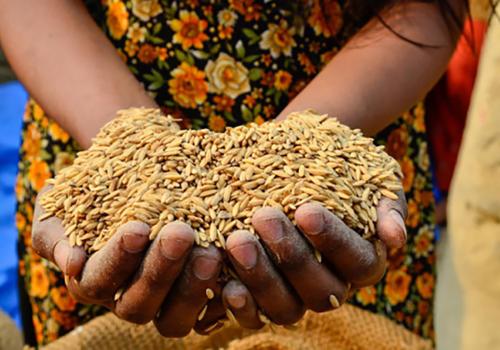
International food commodity prices broadly stable in September – FAO

The overall measure of international food commodity prices was broadly stable in September, with declines in quotations for vegetable oils, dairy, and meat offset by a notable increase in those for sugar and maize, the Food and Agriculture Organization of the United Nations (FAO) reported this week.
The FAO Food Price Index, which tracks monthly changes in the international prices of globally-traded food commodities, averaged 121.5 points in September, compared to 121.4 points in August. At this level, the index is 10.7% below its value a year ago and 24% below its all-time high reached in March 2022.
The FAO Cereal Price Index rose 1% from the previous month, due to a 7% increase in international maize prices, driven by strong demand for Brazil’s supplies, slower farmer selling in Argentina, and increased barge freight rates due to low water levels on the Mississippi River in the United States of America. International wheat prices fell by 1.6%, underpinned by ample supplies and good production prospects in the Russian Federation, while the FAO All-Rice Price Index dipped by 0.5% amid generally low import demand.
The FAO Vegetable Oil Price Index declined by 3.9% from August, with international quotations for palm, sunflower, soy, and rapeseed oils all down, driven in part by elevated seasonal production and abundant global export supplies.
The FAO Sugar Price Index increased by 9.8% from August, reaching its highest level since November 2010 amid increasing concerns over a tighter global supply outlook in the upcoming season. Early forecasts point to production declines in Thailand and India, both key producers, associated with the prevailing El Niño event. The large crop currently being harvested in Brazil, amidst favourable weather conditions, limited the month-on-month increase in world sugar prices.
The FAO Dairy Price Index declined by 2.3% from August, its ninth drop in a row, impacted by lacklustre global import demand and ample stocks in leading producing regions. The euro’s relative weakness against the United States dollar also weighed on international dairy prices.
The FAO Meat Price Index dipped by 1% from the previous month, with a mixture of weak import demand and ample global export availabilities pushing down quotations for pig, poultry, and ovine meats. By contrast, international bovine meat prices rebounded on the back of a strong import demand for lean beef, especially in the United States of America.
Record world cereal stocks forecast
FAO raised its forecast for global cereal production in 2023 to 2 819 million tonnes, now 0.9% higher than the previous year. The higher forecast is almost entirely based on recent and more positive yield estimates for the Russian Federation and Ukraine compared to earlier expectations, owing to continued favourable weather conditions, while Canada’s output is now expected to be notably lower on the back of persisting dry weather in key crop growing areas.
FAO’s new Cereal Supply and Demand Brief pegs global wheat output at 785 million tonnes, coarse grain production at 1 511 million tonnes – up 2.7% from 2022 – and world rice output at 523.1 million tonnes.
Despite a downward revision this month, world cereal utilization in 2023/24, forecast at 2 804 million tonnes, is expected to exceed last year’s outturn by 0.8%, with increased wheat consumption while global rice utilization is forecast at 520.5 million tonnes, suggesting a second successive season of no or negative utilization growth, as continued cuts in non-food uses are expected to offset a population-led increase in rice food intake.
World cereal stocks by the close of the 2024 season are predicted to stand at 884 million tonnes, surpassing the opening levels by 3% and marking a record high. The new and higher forecast for ending stocks, combined with a lower forecast for utilization this month, results in a projected 30.8% cereal stocks-to-use ratio.
FAO’s latest forecast for world trade in all cereals in 2023/24 remains at around 466 million tonnes, unchanged from last month but pointing to an annualized contraction of 1.7% from the 2022/23 level.












































